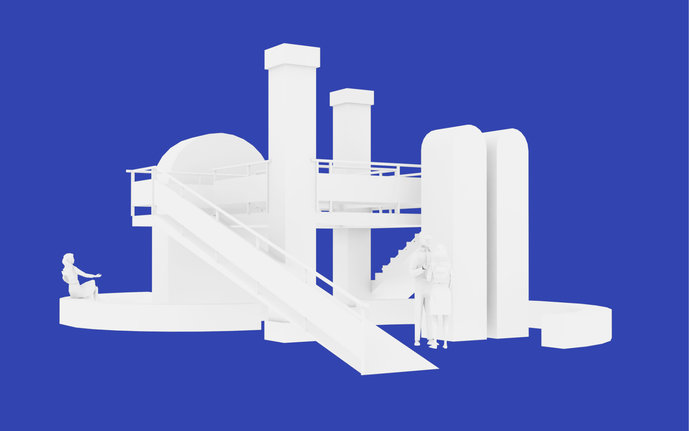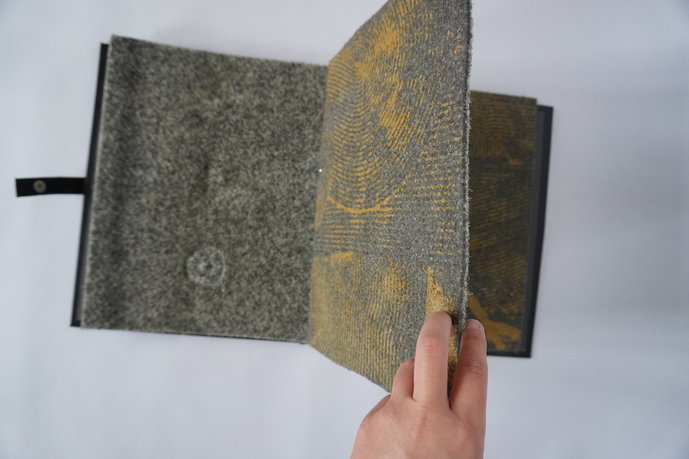

© Lasse Peters


© Tiffany Erndwein
In performances, interventions and concepts students deal with the architecture of the Städtische Galerie "Fruchthalle" in Rastatt, which is undergoing a structural and programmatic transformation. Tiffany Erndwein explores the ecological, material and theoretical implications of the institution's carpeting by testing the sculptural and performative possibilities of the material. Amelie Enders proposes a mirror installation on the square in front of the Fruchthalle, which allows the baroque façade to appear in new perspectives and offsets. Juhee Han activates the space at the back of the gallery through a public program that aims to bring together different groups of the city's public. Lasse Peters proposes a temporary architectural design for an outpost of the gallery that engages with a war memorial in Rastatt. Shih-Ting Wang maps the different levels, materials and connections of the building and reassembles them in a video installation. Wei Wang also creates new perspectives on the gallery space through her viewing machines, which create new visual connections and relationships within the gallery.
The seminar was supervised by the new director of the Fruchthalle, curator Sebastian Schmitt as well as Hanne König and Philipp Schell. The starting point for the discussion was the history and architecture of the building. Since the construction of the Frucht- und Mehlhalle in 1854, numerous alterations have taken place. In 1990, the Karlsruhe architect Helmut Bätzner designed the conversion into a municipal gallery in the style of postmodernism. In the seminar, strategies and theories of postmodernism were discussed and taken as a starting point to kaleidoscopically grasp and rethink the Städtische Galerie.
Participating students: Amelie Enders, Tiffany Erndwein, Juhee Han, Lasse Peters, Shih-Ting Wang, Wei Wang
Supervision: Hanne König, Philipp Schell, Sebastian Schmitt